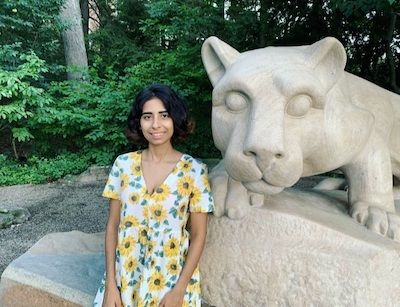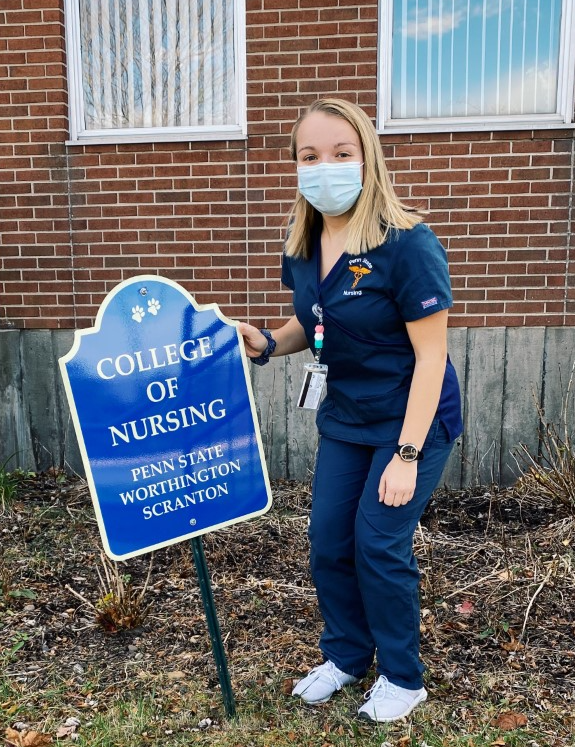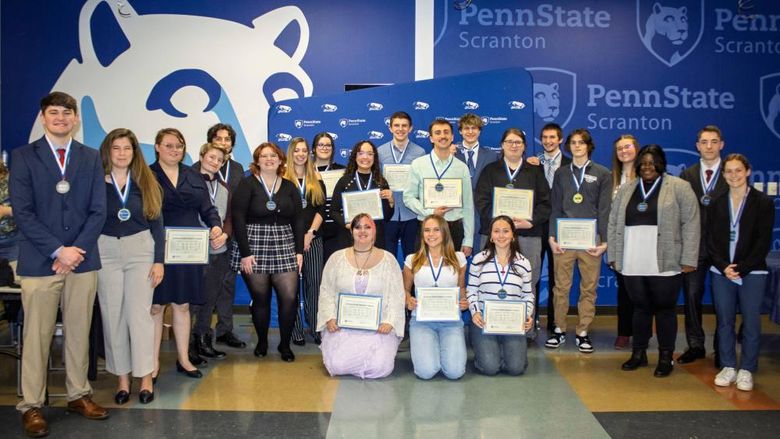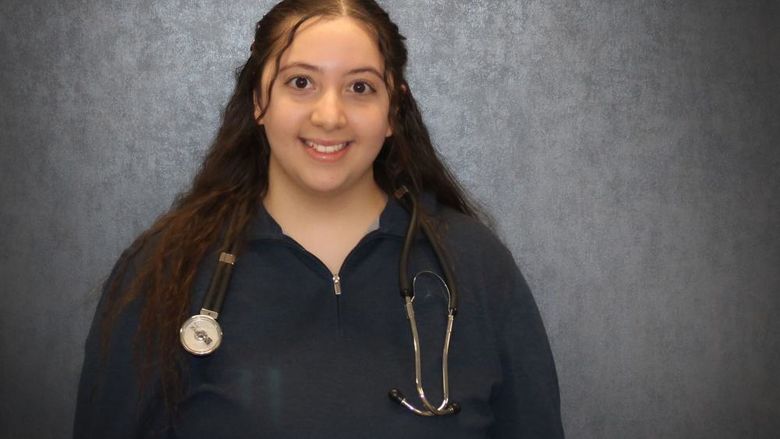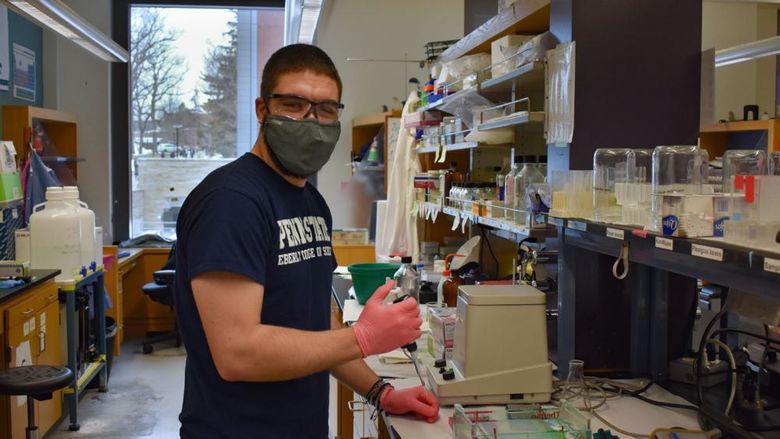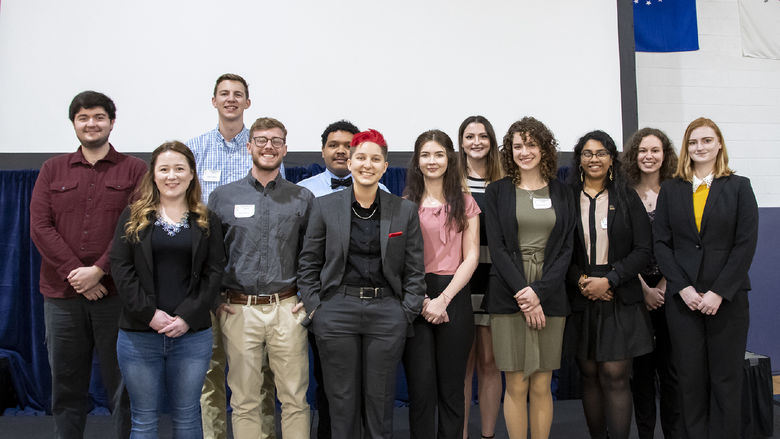UNIVERSITY PARK, Pa. — The 2021 Undergraduate Exhibition, held online between April 14 and 16, showcased the ingenuity of more than 190 Penn State undergraduates from across the commonwealth, who shared their research, creative activity or engagement experience with the Penn State community.
“It’s always inspiring to view the work on display at the Undergraduate Exhibition, and this year was no exception,” said Alan Rieck, associate vice president and associate dean of Undergraduate Education. “The students who delivered presentations displayed extraordinary levels of creativity and talent, and they gave all of us reason to be Penn State proud.”
This was the second year the Undergraduate Exhibition, which is typically held in the HUB-Robeson Center at the University Park campus, took place virtually, given the continued need for physical distancing during the coronavirus pandemic.
Participants used an online platform called Symposium to upload posters, presentations and performances for judges and the Penn State community. Students presented in the areas of engineering, health and life sciences, physical sciences, social and behavioral sciences and arts and humanities, including the visual arts. Students had the option to present findings from an undergraduate research project; offer a creative performance; or reflect on a student engagement experience.
Among the students who presented on their research was Neila Raveen, a biobehavioral health major at Penn State Greater Allegheny. Raveen, of Toronto, Ontario, presented her research on “Racial influence on prevalence of Endometriosis,” after having presented the same project at the Student Research and Creativity Conference at the Greater Allegheny campus in fall 2020.
Her work examines the racially differential rates of the diagnosis of endometriosis, a condition where “endometrial-like tissue grows outside the uterus.” Under mentor Kristal Tucker, assistant teaching professor of biology, Raveen’s work considers factors that can affect a woman’s access to health care, and also considers social, biological and other biases.
Raveen said students who might be considering presenting in a research exhibition should be proud of their work and not worry about the reaction.
"Don't be scared about people's reaction to your work,” she said. “If you give it your all and are passionate about your topic, no matter the topic, it will show! Be proud of your work and showcase it!”
Another presenter within the research category, Harman Singh of Chandigarh, India, has presented at several research exhibitions, both within and outside of Penn State. For the 2021 Exhibition, the geography major in the College of Earth and Mineral Sciences presented in poster from her research “Examining the Complex Nature of Flash Flooding through a Mixed Method Approach: A Case from Kerala, India.”
Her work examines the factors that cause impactful flash floods in Kerala, the public’s perceptions and the “spatial-temporal rainfall statistics that capture impactful flash-flood events.” Her mentors are Trevor Birkenholtz, associate professor of geography, and Helen Greatrex, assistant professor of geography and statistics.
Singh said that in addition to fulfilling the requirements of her Erickson Discovery Grant, she was motivated to present as a senior nearing graduation and the end of the study.
“I felt that by creating a poster I would be able to summarize my work and present it at future conferences and student-faculty meetings,” she said. “Since I have put together posters previously, I can say that it gets easier as one has more practice.”
Several students treated audiences to recorded creative performances. Parker Konkle, a junior from Montoursville, Pennsylvania, who is pursuing a bachelor of music in piano performance in the College of Arts and Architecture, was one such student. Konkle offered a performance and discussion of a piece by 19th-century Russian composer and pianist Aleksandr Scriabin, Etude in D-sharp Minor, Op. 8, No. 12.
“I’ve been studying several pieces by composers Scriabin and Chopin for two semesters and was eager to share what I had discovered about them,” explained Konkle. “I enjoyed the opportunity the Exhibition provided to share my performance and discuss what I had learned.”
After graduation, Konkle said that he hopes to enter a master’s program in piano performance and collaborative piano, with the ultimate goal of earning a doctorate and teaching piano at the college level.
Within a separate category, several students offered reflections of student engagement experiences. Logan DeSanto, a native of Dickson City, Pennsylvania, and a junior at Penn State Scranton, presented on her experience shadowing a registered nurse from a home health and hospice agency during fall 2020. DeSanto, who is majoring in nursing, said that she pursued the experience with support from the Student Engagement Network because she wanted to gain hands-on clinical experience to supplement her classroom learning. The opportunity enabled DeSanto to join the nurse in visiting and treating patients in their own homes.
“My biggest takeaway was the confidence I gained as a nurse,” said DeSanto. “I was able to understand what a nurse does daily, to perform skills learned in my nursing courses and clinicals and to see the connection between evidence-based research and practice, which guides care.”
In her presentation, DeSanto shared her belief that all nursing students could benefit from engagement opportunities that provide real-world, hands-on clinical experience. She said that she hopes to attend graduate school to become a nurse practitioner and make a difference in the lives of the patients she cares for.
The Undergraduate Exhibition wouldn’t be possible without the help of volunteer judges, and this year more than 140 Penn State faculty, staff and graduate students — all with backgrounds in doctoral-level research — served as judges.
Judge Bryan Nichols, assistant professor of music in the College of Arts and Architecture, said of the experience, “It was a pleasure to judge the exhibition because I got to meet students outside my own field of music and music education. The event provided a milestone in students’ undergraduate research training which will propel them to applied work and careers or enhance their graduate school applications.”
Based on scoring feedback from judges, event organizers will announce the winners of prizes across nine different categories later this month. Some prizes come with cash awards.
The Undergraduate Exhibition is coordinated by Undergraduate Education, the academic administrative unit that provides leadership and coordination for University-wide programs and initiatives in support of undergraduate teaching and learning at Penn State. Learn more about Undergraduate Education at undergrad.psu.edu.

